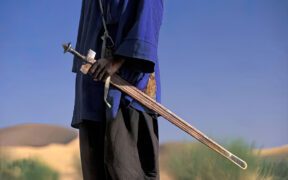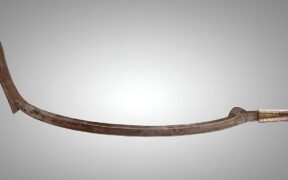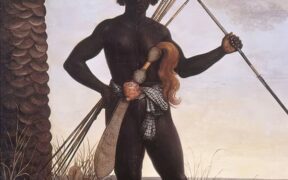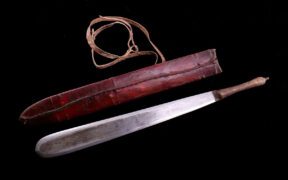Our content features commercial links to our products, committed to transparent, unbiased, and informed editorial recommendations. Learn More
Salampasu Sword: The African Blade With Five Sharp Tips
NO AI USED This Article has been written and edited by our team with no help of the AI
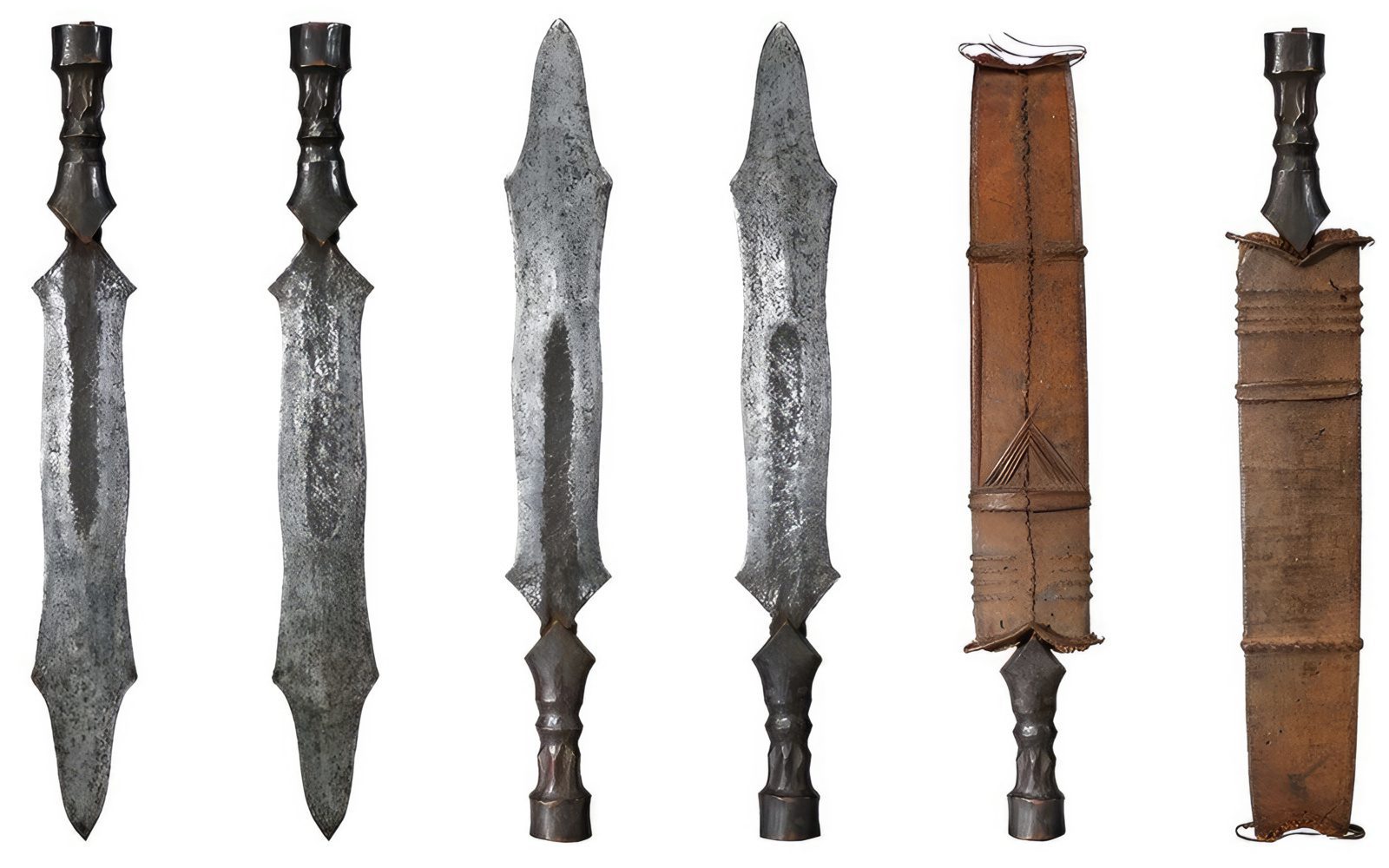
African Swords are known for their terrifying looks. These attributes help with the intimidation factor while in combat and as a form of masculine regalia that only the proudest warrior tribes can own. The Salampasu, sometimes known as Mpuku, is one of these fearsome African blades used by the Salampasu Tribe.
It is a shortsword often called the second most terrifying African blade after the Ngombe Ngulu. In this article, we will delve into its characteristics and vivid details, and then we will explore its versatile uses in the past and present and explain its history.
Characteristics of the Salampasu Sword
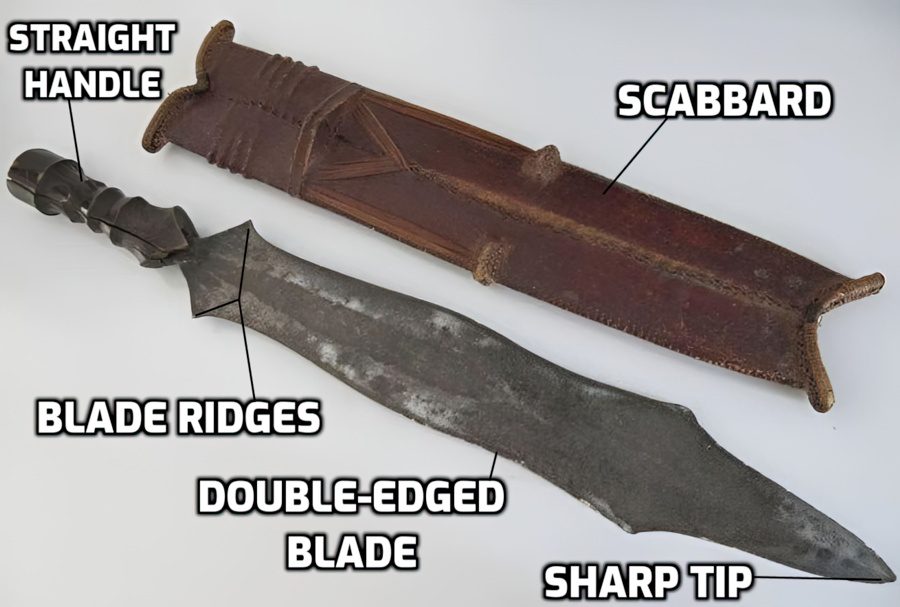
The Salampasu is a sword unlike any other. It features a blade that is an inspiration for modern media and anime. Despite looking like a ceremonial and decorative sword, the Salampasu was a functional blade used heavily for combat. Its characteristics are unusual and made to intimidate even the toughest warriors neighboring the Salampasu Tribe.
Blade
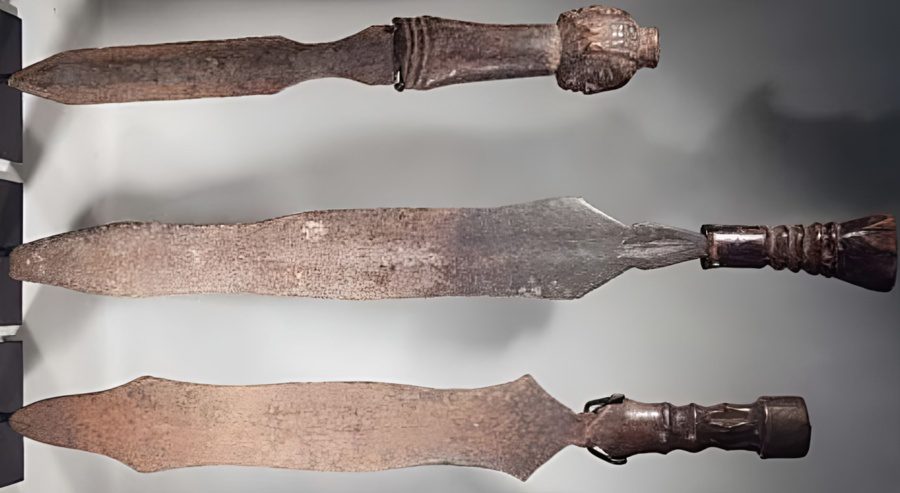
The most visual aspect and characteristic of the Salampasu Sword is its blade. It is a straight, double-edged blade, meaning sharpened on each side, with several triangular-shaped ridges. Commonly there are four ridges, two on each side, while some Salampasu blades can have only two. These ridges are made to make the blade look intimidating and help with cutting attacks.
The Salampasu blade also has a sharp tip that can be used for thrusting strikes. The blade is traditionally made out of iron, but during and after the Colonialism period, there were instances of sharper and stronger steel blades. The most usual blade length for the Salampasu Sword is between 16 to 20 inches (40 to 50 cm).
Guard
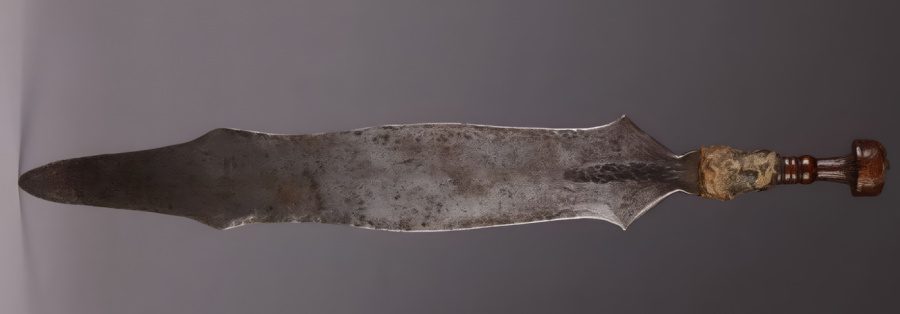
African Salampasu Swords do not feature any type of guard. This is fairly common for African swords because they were primarily used with a large leather or wooden shield. Some Salampasu blades have the first two triangular shapes extended and made larger to possibly function as a guard.
Handle
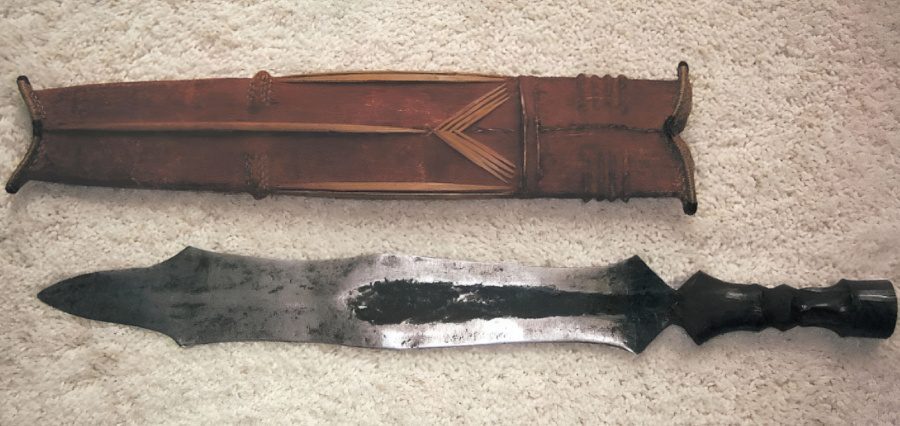
The handle of the Salampasu Sword is straight and can feature intricate designs. Despite looking like a nonfunctional ceremonial handle, it is a hilt that provides a sturdy grip to the user’s hand. It is usually made out of wood and decorated with carvings. It is an opened one-handed handle and is most common at four inches (10 cm).
The characteristic of the Salampasu handle is the many ribs found throughout, which can vary from two to five and sometimes be broad. Some rare ceremonial two-handed handles are used by the Salampasu nobility and designed from iron, copper, or bronze.
Pommel
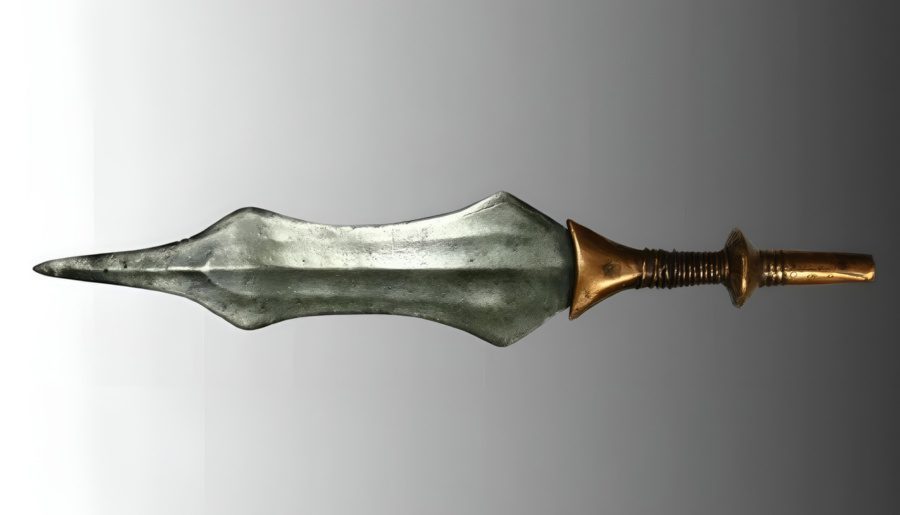
The pommel is the metal or wooden cap that holds the full-tang blade underneath the handle and acts as a counterweight of the blade. The Salampasu Sword features a large pommel, most likely influenced by the popular swords used by the Kuba people, known as the Kuba Ikul. Some rare cases of a ceremonial Salampasu have an extended pommel making the sword usable with two hands.
Scabbard
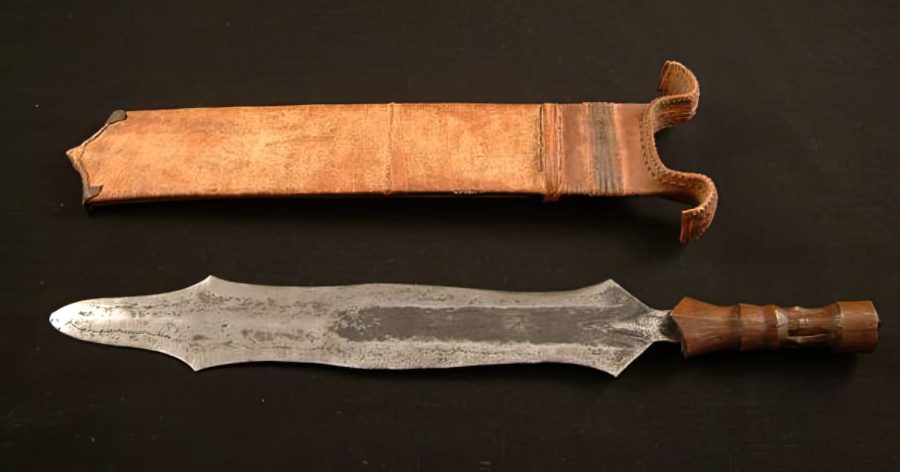
The scabbard or sheath is the placeholder for the Salampasu Sword when it is not in use and protects it from the elements, such as corrosion or rain. Salampasu scabbards are usually made of wood and then covered with hide or leather decorated or dyed in different colors.
Typically and traditionally, the sheathed Salampasu sword is carried around the waist on the back or the side of the user. The opening of the scabbard is in an arrow shape, and the dimension of the triangular ridge blade forms.
Weight
Salampasu Swords do not weigh much but are still heavier than most because they are combat weapons that would need to inflict more damage upon impact. The most common weight for the Salampasu Sword is around 1.5 lbs (0.7 kg).
Size and Length
The Salampasu Swords are one-handed shortswords typically worn on the waists and used with hacking or chopping types of motions. They can be secondary or primary weapons of war due to their size and length. The most common length of the Salampasu is between 20 to 24 inches (50 to 60 cm).
Uses for the Salampasu Sword
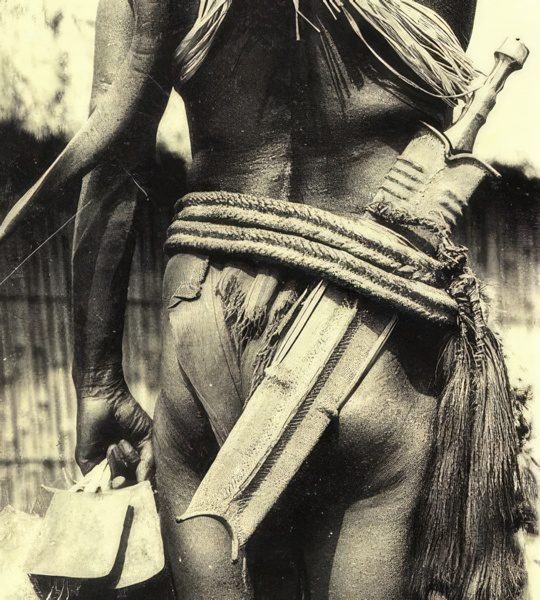
The Salampasu is an African shortsword with a straight blade and many sharp ridges. It is used only with one hand combined with a large shield and is primarily used for chopping and slashing attacks, despite its sharp tip used for thrusting. The most important thing about using the Salampasu in the past was fast footwork combined with jumping and hopping.
Warfare and Combat
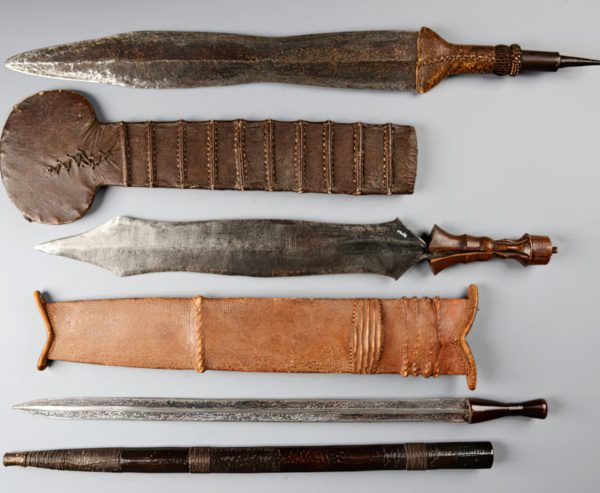
The first and primary use of the Salampasu Sword was for combat. A straight and pointy blade made it an effective thrusting tool while the user is protected with a large shield, similar to the Roman Gladius. The ridges on the blade could inflict serious wounds that could lead to internal and external trauma to an unarmored opponent.
The Salampasu Tribe was known as a ferocious and protective tribe. The design of the blade could have formed over the years as a means of intimidation toward their enemies in combat.
Prestige and Rank
More than just a scary object of war, the Salampasu Sword was an item of regalia that signified the status of a warrior. The Salampasu Tribes have a long warrior tradition that built up a hierarchy. The most notable is known as the Mungongo. Owning a certain type of Salampasu, which could have slight variations, would represent the warriors rank. The Ikul Sword was similar to this as well.
Ceremonial
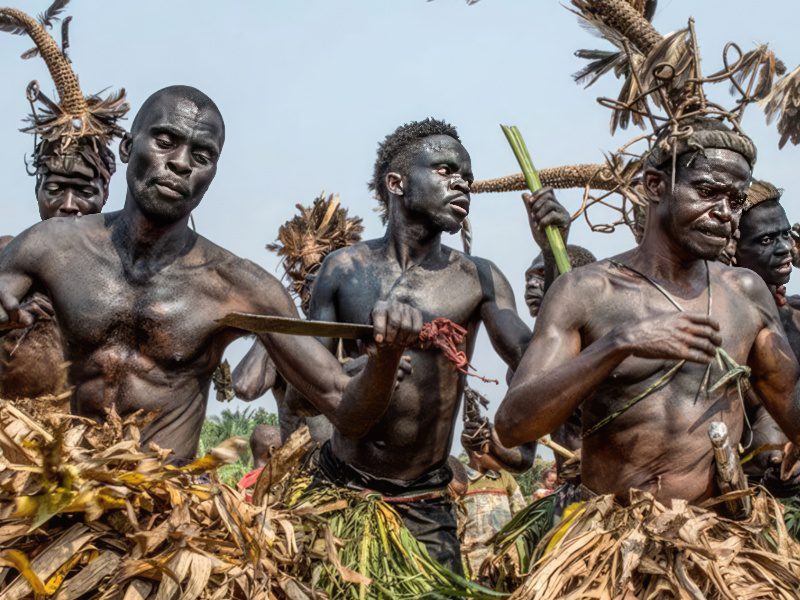
Being a successful combat weapon, it fends off enemies of the Salampasu Tribe and makes it a common ceremonial blade. It can be featured in many traditional dances, religious ceremonies, funerals, as wedding dowries, and festivals commemorating past battles.
It was most popular with the Mungongo warrior class, who traditionally carried masks and wielded the sword during entertaining dances. Also, one of the most ceremonial uses for the Salampasu Sword is the tribal initiation rite for a boy entering adulthood.
History of the Salampasu Sword
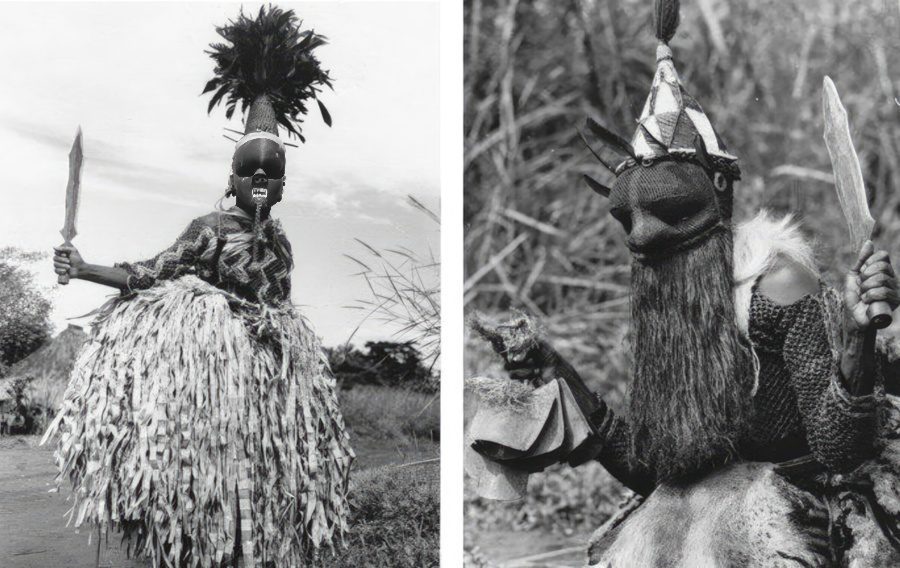
The Salampasu Sword is also known as Mbuku. It is a blade used by the Salampasu Tribe from Central Africa in what is now the southern part of the Democratic Republic of the Congo and Angola. This is why today it is known and called the Salampasu Sword. It was a widely used and valued tool in the area, and people like Chokwe, Kete, and Lwalwa used it frequently.
The Salampasu people had many enemies and tribal warfare in their history. This has led to the culture of the people being raised with a warrior spirit and many combat-like elements. The Mungongo Tribal Warriors with their errie masks and intimidating Salampasu swords are the core element of the Salampasu still following traditions today.
Becoming a man and a warrior was celebrated with the Salampasu Sword. Distinguishing how great of a warrior one was, was also done with the Salampasu Sword, which was carried by almost all men. The neighboring tribes intimidated by the Salampasu could have been because of their fearsome blade, that was used for sacrifice and cannibalism.
Today, the Salampasu Sword is a very important part of the Salampasu culture, which is still a hierarchical society held together by local warrior chiefs. Local blacksmiths construct it by the plenty, and it is used in many rituals and is highly respected.
